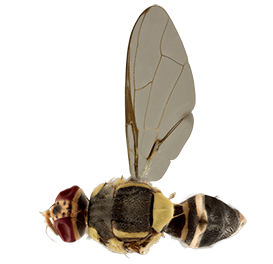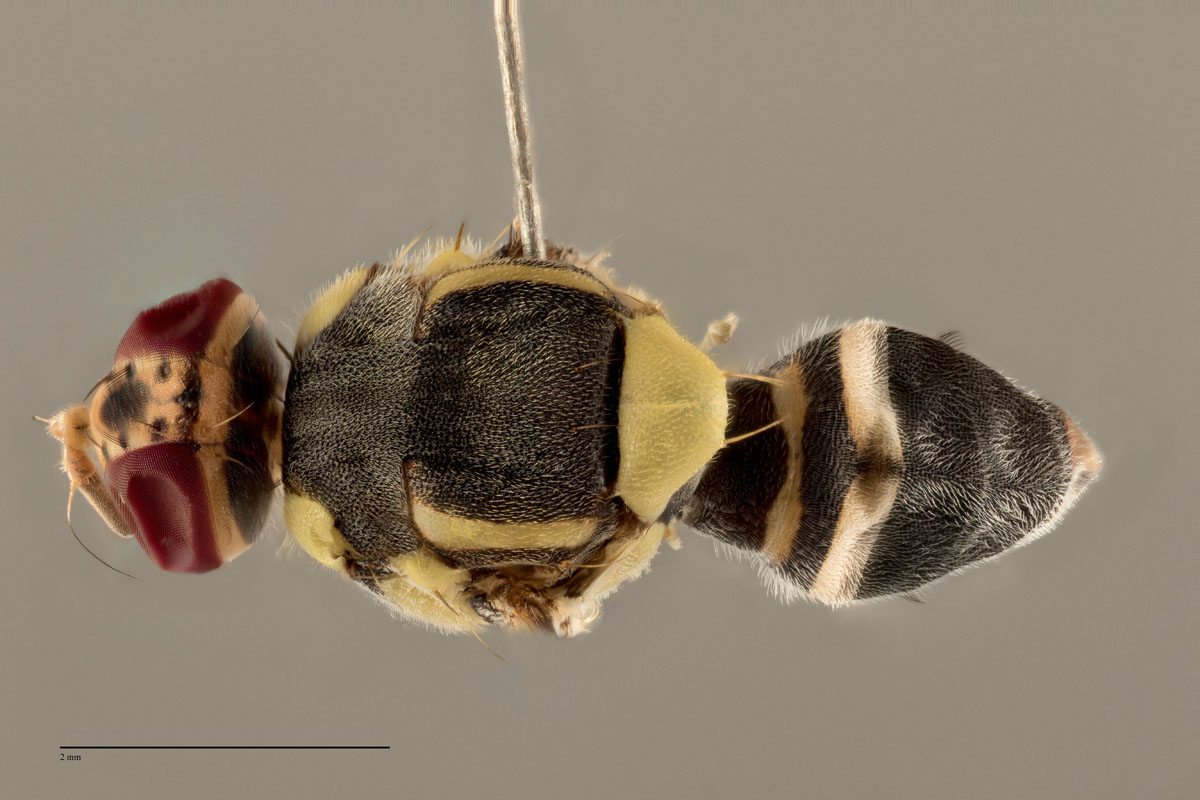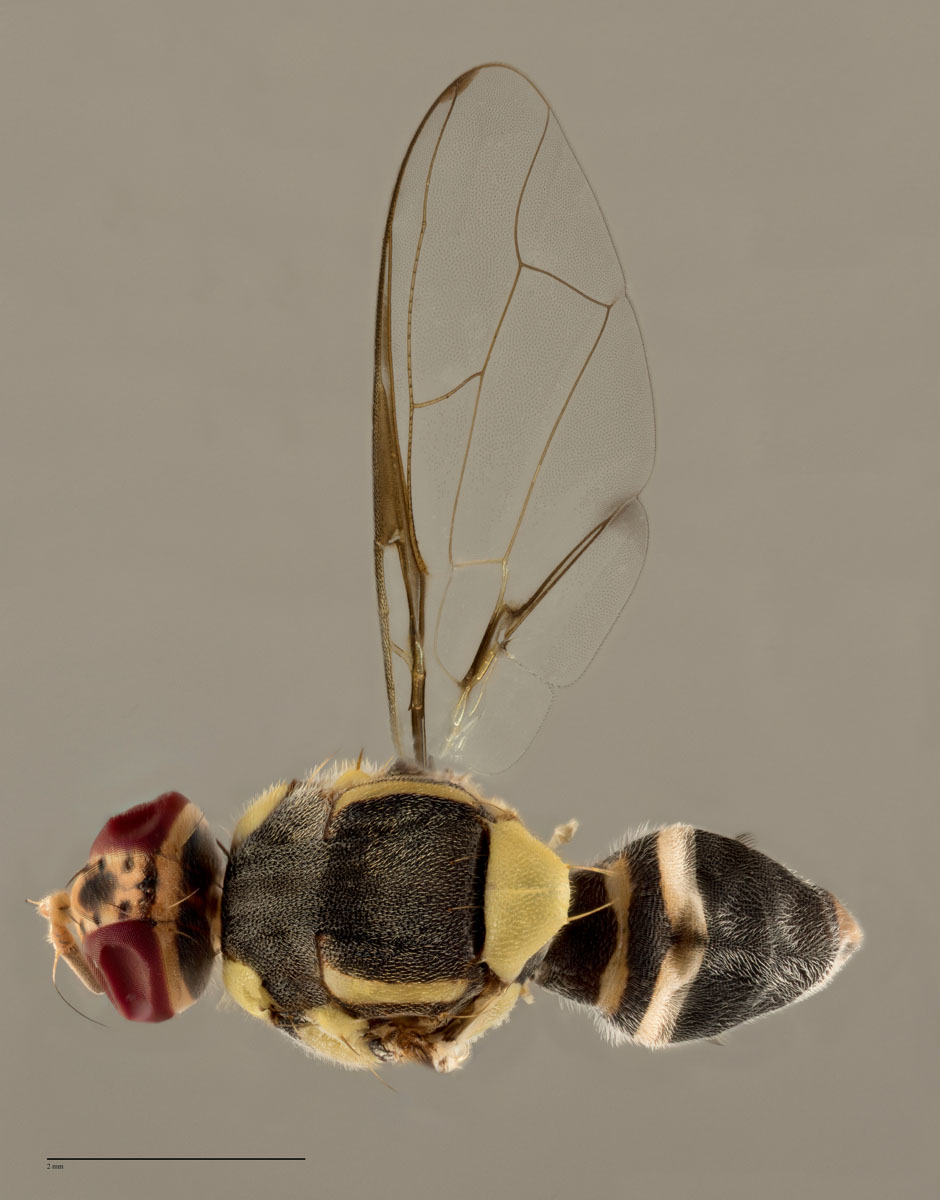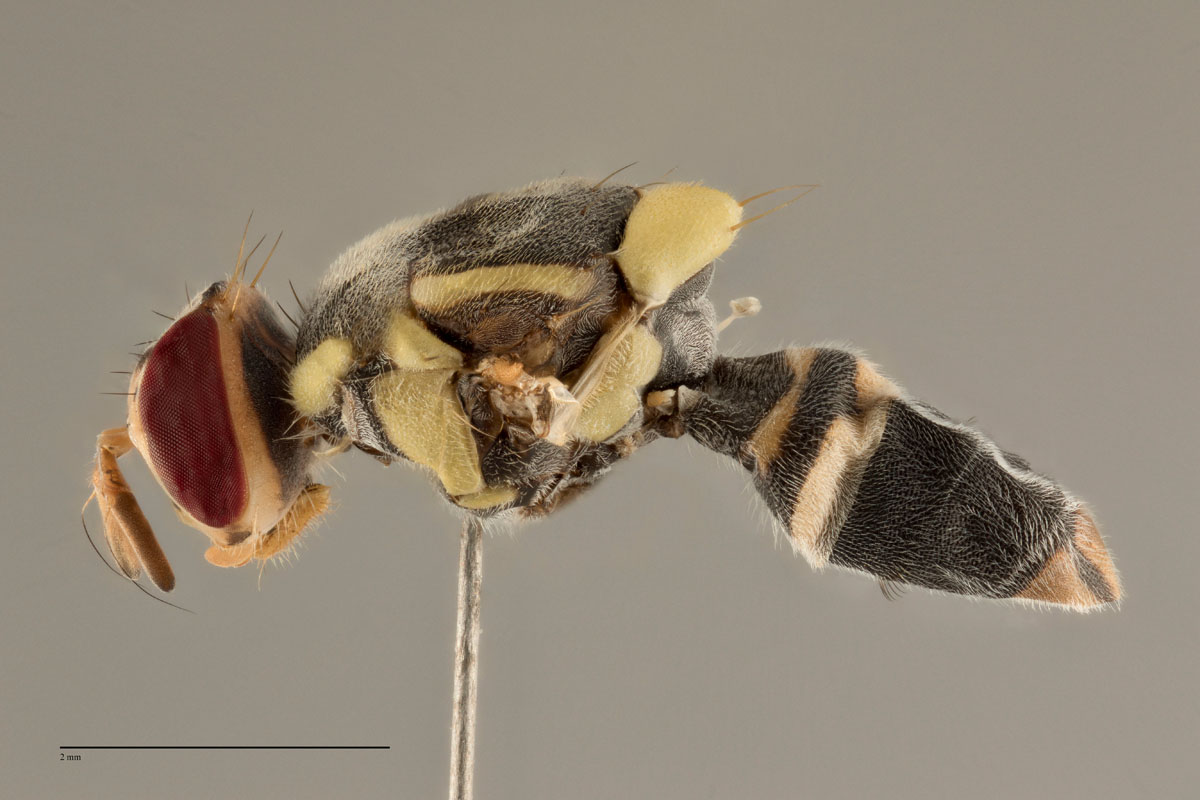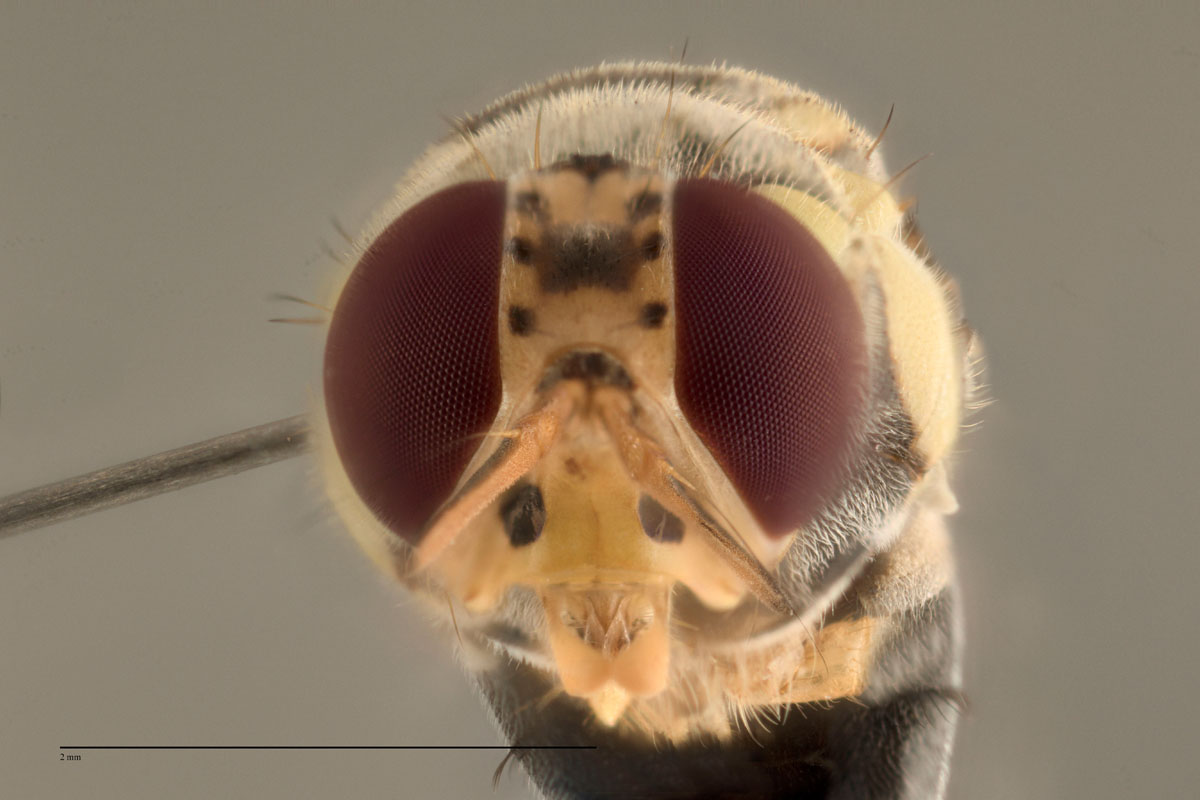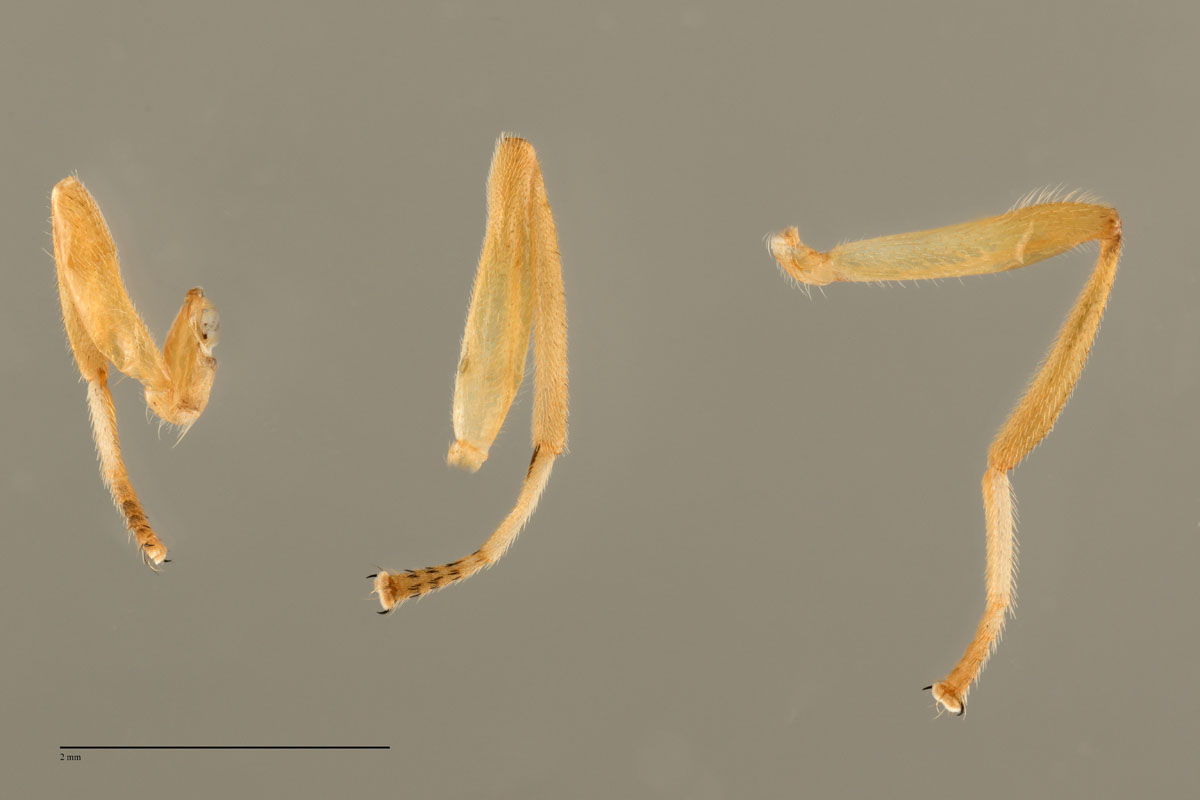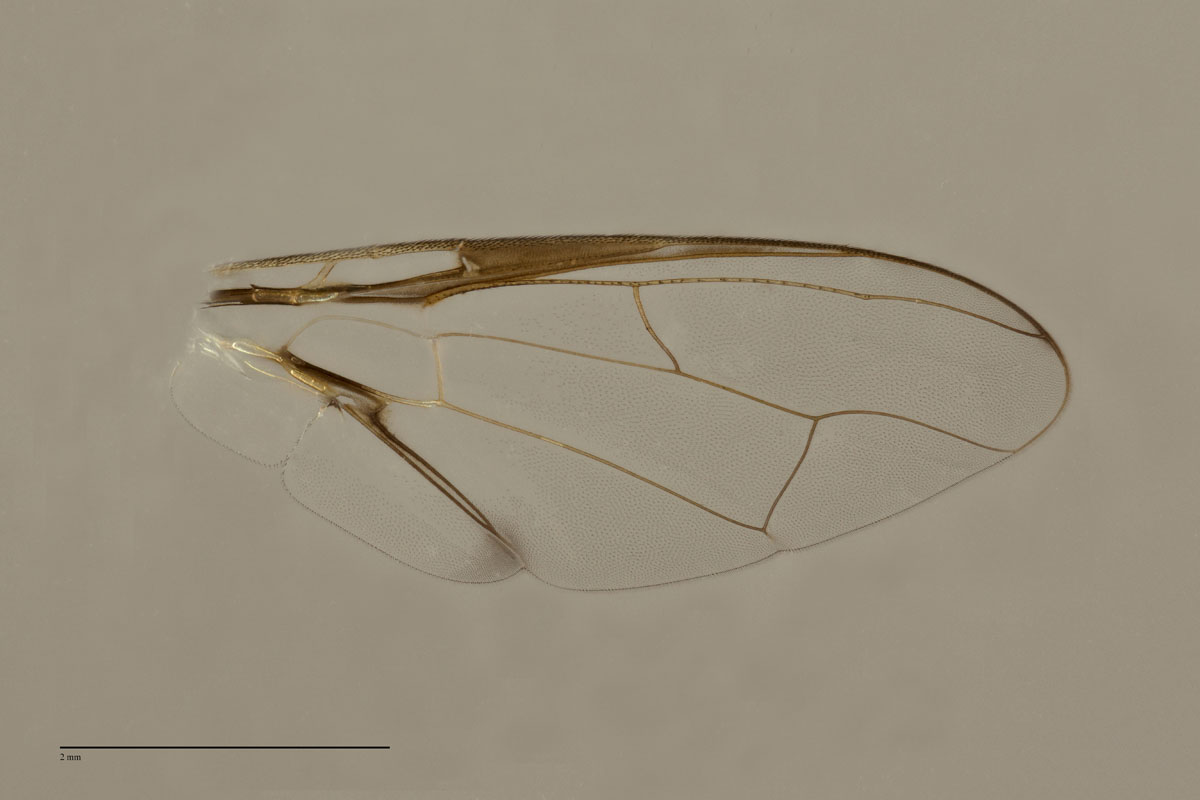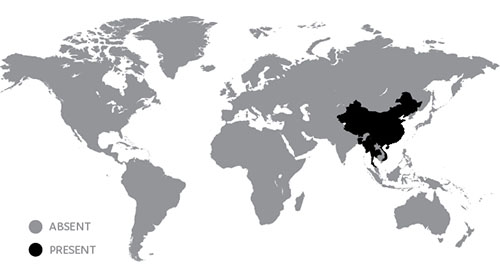Diagnosis
Morphological – adult
Features include:
- a medium-sized species
- face fulvous with a pair of large circular black spots
- postpronotal lobes and notopleura yellow, scutum mostly black
- lateral postsutural yellow vittae present
- medial postsutural yellow vitta absent
- no yellow spot anterior to notopleural suture
- mesopleural stripe reaching midway between anterior margin of notopleuron and anterior npl. seta dorsally
- scutellum yellow
- wing with cells bc and c colourless, microtrichia in extreme outer corner of cell c only
- a narrow pale fuscous to fuscous costal band confluent with R2+3 and broken beyond apex of this vein and with a small fuscous to dark fuscous spot around apex of R4+5
- a narrow pale fuscous anal streak confined within cell cup; abdominal terga III-V entirely black.
Morphological – larvae
No information available.
Molecular
DNA barcoding
Diagnostic BOLD reference data available.
DDOSTs2 data
B. tuberculata TUB001 Classic specimen DDOSTs2
B. tuberculata TUB002 Classic specimen DDOSTs2
EIF3L data
B. tuberculata TUB001 Classic specimen EIF3L
B. tuberculata TUB002 Classic specimen EIF3L
FCOI data
B. tuberculata TUB001 Classic specimen FCOI
B. tuberculata TUB002 Classic specimen FCOI
RPA2 data
B. tuberculata TUB001 Classic specimen RPA2
B. tuberculata TUB002 Classic specimen RPA2
PCR-RFLP Test 1
BsrI: Data not available
HinfI: Data not available
HhaI: Data not available
Sau3AI: Data not available
SnaBI: Data not available
SspI: Data not available
Vspl: Data not available
PCR-RFLP Test 2
Data not available.
